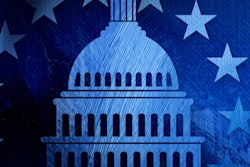
As dentists continue to recover from the effects of the pandemic, they can start 2021 with renewed confidence and additional financial assistance now that the latest COVID-19 relief bill has been signed into law. Included in the law are key updates related to the Small Business Administration's Paycheck Protection Program (PPP) and signature 7(a) loan program that affect existing and new borrowers.
If you own a dental practice or small business, then the changes in these loan programs are worth noting. Below are four key takeaways for dentists.
1. Second PPP loan available
 Mark Schmidt.
Mark Schmidt.As you may remember, the PPP was designed primarily to help business owners retain their employees. Dental practices participated heavily in PPP; according to an ADA Health Policy Institute poll from September, more than 90% of 19,000 dentists surveyed said they applied for relief from that federal program.
Under the new law, the PPP is extended through March 31, 2021. PPP borrowers who meet certain criteria are eligible for an additional PPP loan (a second draw). To qualify, businesses must employ 300 or fewer people, have used or will use the full amount of their first PPP loan, and demonstrate a minimum 25% reduction in gross receipts during any quarter in 2020 compared to the same quarter in 2019.
Those who are eligible may apply for the lesser of 2.5 times their average monthly payroll during either 2019 or 2020, or $2 million. Borrowers with small businesses in the especially hard-hit accommodations and food services industries (those in North American Industry Classification System [NAICS] Code 72), may receive a loan up to 3.5 times their average monthly payroll costs.
2. PPP loan forgiveness application process simplified
The law provides for a one-page forgiveness application for loans of $150,000 or less. The form should be available by late January. Borrowers who qualify for simplified forgiveness will be required to sign and submit the form, to include details such as the number of employees retained and the amount spent on payroll. Borrowers must attest to the accuracy of the certification and that they complied with PPP requirements. Supporting documentation will not be required with the simplified forgiveness application but must be retained for four years for possible future review by the SBA.
3. Government payments extended for 7(a) loans
Under the new law, existing 7(a) borrowers will receive an additional three months of payments from the SBA, beginning in February 2021. Existing borrowers in industries hardest hit by the pandemic, as defined by the SBA, and who secured their loans by December 27, 2020, can receive an additional five months of payments after receipt of three months of payments -- for a total of eight payments. Borrowers who take out new loans before October 1, 2021, will receive the first six months of principal and interest payments from the SBA.
All payments made by the SBA for existing and new 7(a) loans will be capped at $9,000 a month. Payments for existing borrowers will resume in February 2021, while those for newly approved 7(a) loans will begin with the first payment due and continue for six months thereafter.
4. 7(a) loan guaranty percentage and fee waivers increased
Another temporary change to the 7(a) loan program includes a guaranty increase to 90%, up from 75%, and fee waivers through September 30, 2021.
Small businesses are key to our nation's economy and its recovery from the pandemic, and dental practices are essential to our local communities. Through the new COVID-19 relief bill, the SBA's loan programs will continue to provide the financial relief that small business owners need to help them recover and, ultimately, thrive.
Mark Schmidt is CEO of Fund-Ex Solutions Group. For more information, visit fundexsolutions.com.
The comments and observations expressed herein do not necessarily reflect the opinions of DrBicuspid.com, nor should they be construed as an endorsement or admonishment of any particular idea, vendor, or organization.



















